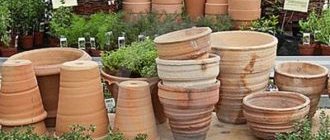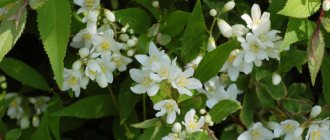What indoor asparagus looks like of different types and varieties: photos and names of varieties
Among the representatives of the asparagus family, a special place is occupied by edible varieties of asparagus, shown in the photo, which are grown for gastronomic purposes:
Today, for their aesthetically graceful appearance, plants are used for interior landscaping, creating original cascading ikebana flowers, arranging bouquets and other flower arrangements.
The huge variety of species and varieties does not allow us to unambiguously answer the question of what homemade asparagus looks like, since specific features and characteristics are always inherent.
However, general external characteristics characteristic of the vast majority of plants of this family can be distinguished:
- Herbaceous shrubs, lianas.
- Flexible stems.
- Leaf shoots are needle-shaped.
- Small flowers in inflorescences.
- Single-seeded decorative berries.
This homely, sophisticated asparagus flower with its lush green color will add freshness to any room and fill the atmosphere with coziness.
Modern breeding science knows more than 200 species of ornamental asparagus. However, not every species can be found in flower shops or in the collections of professional flower growers.
According to experts, no more than ten species are cultivated and grown indoors or in open ground.
For greater clarity, all descriptions of asparagus species are supplemented with photos and official names, which will help you understand in detail the specifics of each member of the family:
The most famous is the densely flowered asparagus ( Asparagus densiflorus ) - a powerful plant with sparse cladodes-shoots, its leaves are transformed into awl-shaped scales. The height of the bush is insignificant - only 45 cm, but due to the elongated shoots (more than one and a half meters), its width exceeds 6-7 m.
The leaves (or so-called phyllocladies) are small, scale-like. Once a year, the plant pleases its owners with flowering, represented by compact inflorescences of miniature white flowers. A week later, these delicate “fireflies” are replaced by round fruits of a noble burgundy color.
Breeders have developed excellent varieties of this asparagus:
"Myersii" - with distinctive shoots stretching upward.
"Sprengeri" - with characteristic long drooping branches.
's asparagus (Asparagus Meyeri) leaves are arranged much more densely in the form of a spindle. The herbaceous shrub is not large in size. Its height barely reaches 40 cm, but the branched shoots grow significantly in width - more than 5.5 m. This flower is popularly nicknamed “fox tail”, which is explained by the location of the ovaries, which gives splendor to each stem.
To figure out what this “fluffy” asparagus looks like, take a look at the photo, and you will certainly have associations with forest fur-bearing animals - after all, the “tails” in this case are shown in green color from the pot.
Crescent asparagus (Asparagus falcatus) is an excellent hanging plant that is easy to care for. It got its name due to the shape of the leaves, which resemble “sickles” with a rounded bend.
The dimensions of these slightly corrugated phylloclades are small: 5 cm in length and up to 2 cm in width. The distinctive properties of the plant are its rapid growth and cold resistance. Because of these features, this type is most often used to decorate verandas and glazed balconies, where the temperature is not always warm.
of pinnate asparagus (Asparagus plumosus) are especially elegant , which are wrapped in miniature thread-like leaves resembling scales collected in bunches.
During the flowering period, this type of indoor openwork asparagus produces tiny white flowers, which smoothly give way to dark blue berries. The fluffy, scale-like structure of the plant is widely used to decorate bouquets and ikebana flowers or to create interior partitions and decorative screens.
Just look at the photo of beautiful indoor asparagus species, and their sophisticated lace silhouette in a rich green color will certainly provoke the imagination to create a new decorative composition using them:
Along with indoor representatives, experienced gardeners grow garden specimens of the plant. The places where they grow can be open ground in summer cottages, greenhouses, and front gardens. Changeable summer weather with its characteristic slight coolness or drought is not an obstacle to the normal development of this flower.
The main garden species of asparagus shown in the photo is asparagus asparagus (Asparagus asparagoides var. myrtifolius).
For more than a decade, it has been widely used as decorative greenery in bouquets. Due to its unpretentiousness and beautiful appearance, many hybrid interpretations of it have been developed today.
A description of the varieties of asparagus with official names and photos will form a general idea of this wonderful representative of the flora:
Asparagus officinalis , popularly referred to as medicinal asparagus, is a tall herbaceous plant that can grow over 1.5 m in height. Branched thin stems bend from many sharp scaly leaves. During flowering, the plant is decorated with miniature amber flowers.
The next cold-resistant bush is Asparagus asparagus L. , which can often be found under the name white asparagus. This variety of asparagus is used for making medicines and also in the culinary industry. Externally, the plant has more powerful outlines than its decorative relatives. The height of individual specimens can be more than 2 m.
Green asparagus is considered a culinary variety of asparagus. A branched stem, small leaves, miniature flowers and dark blue oval fruits are its characteristic features.
The nutritious parts of the plant are considered to be sprouts, which are collected from May to June. The presence of a large amount of vitamins, fiber, and antioxidants was the main reason for growing this variety.
Asparagus setaceus: reproduction
Asparagus setaceus reproduces in the spring by dividing its rhizomes. To do this, you need to remove excess soil from the root tubers and then cut them with a sharp knife. Rooted cuttings are planted in small pots with a standard flower substrate. Freshly planted cuttings continue to be grown in the same way as old specimens.
It is also possible to propagate asparagus by seeds. Seeds germinate well indoors at room temperature, but plant seedlings develop very slowly at first.
Reproduction by division
A simple way to propagate indoor asparagus is by dividing the rhizomes in early spring. This is asexual reproduction in which the new plant has the same characteristics as the mother plant. To do this, always use healthy old plants that already have a pronounced tuber system in the soil.
- The ideal time is early spring (end of the winter dormant period);
- Carefully remove the plant from the pot;
- Remove the substrate as best you can;
- Be careful, the roots break easily!
- Cut off individual independent parts of the tubers;
- Tool: sharp sterile knife;
- Create as small a cutting surface as possible;
- Always leave smooth surfaces after cutting;
- The smaller and smoother the cut surface, the lower the risk of disease;
- Allow the cut surface to dry slightly;
- Alternatively, sprinkle the cut surface with charcoal (has a disinfectant effect);
- Plant in substrate;
- Planting depth: same as the original plant (no deeper);
- Continue to grow like the old specimens.
Note: usually the spines of indoor asparagus are not clearly visible. When replanting, the grower will first notice them when they scratch or cut his fingers and palms. Therefore, for preventive purposes, it is better to wear gloves!
Propagation by seeds
Sexual reproduction occurs by sowing seeds contained in small round fruits. Growing by seed is very easy because the seeds germinate well at room temperature. However, the shoots of these plants often develop slowly and the overall growth is very restrained.
- Time: January to March;
- Warning: seeds do not have a long shelf life and should be sown relatively quickly!
- Place the seeds on a moist substrate;
- Substrate: flower soil or cactus soil;
- Do not use regular soil (containing fertilizers);
- Cover the seeds with a very thin layer of fine-grained soil;
- Maintain moisture in the pot at all times;
- Cover the pot with clear film;
- Germination temperature: about 20 °C;
- Place on a warm windowsill (west or east window);
- The dive is carried out after about four weeks;
- After another six to eight weeks, transplant the plants into their own pots.
Tip: seeds germinate better if they are soaked in warm water for 24 hours before sowing.
Growing asparagus at home: light, temperature and soil
The indoor ornamental plant asparagus is one of the unpretentious and grateful representatives of the flora. It is enough to provide basic living conditions, and the flower will delight its owners with a luxurious bright green crown and sophisticated inflorescences.
Sun-loving shrubs feel comfortable on the western and eastern sides of the apartment. Since this location not only provides them with a lot of light, but also protects them from long-term direct exposure to sunlight. If the created interior composition with asparagus will look more harmonious in a southern room, then it is advisable to place it away from the window. From late spring to early autumn, such a flower can be left on open verandas or balconies, the only warning is to avoid heavy rainfall and drafts.
When growing gourmet asparagus in ordinary home conditions, there are no special temperature requirements. According to experts, the temperature should be normal room temperature, cooler in winter, but not lower than 10°C.
Therefore, in the hot summer at 25°C, the plant will feel uncomfortable, and the leaves may even dry out. In such situations, even an increased level of air humidity will not be able to restore the fading stems - they will have to be removed.
Air humidity: does not matter. However, if the flower grows in extreme dryness, it will soon turn yellow and dry out. To obtain a more saturated and bright color of the leaves, you should regularly spray this ornamental bush.
Particular attention should be paid to the quality and composition of the soil. Substrate: flower soil mixture with 1/4 loam. If you have experience in preparing the soil yourself, you can mix turf and leaf soil, and also add a small amount of peat and sand.
By creating such a “cozy” habitat, gardeners prevent situations in which asparagus gradually dries out, while the plant, with its thick openwork crown and rich green color scheme, will only touch and delight.
Description of the plant
Asparagus (asparagus) is a perennial crop of the Asparagus family , some species of which are edible. The soft narrow leaves of an evergreen subshrub or vine are sometimes mistaken for needles, with which they have nothing in common. On herbaceous, highly branched shoots up to one and a half meters in length, there are scaly, underdeveloped leaves with hard spurs at the base. In the axils of the foliage there are numerous, collected in bunches, needle-shaped branches - cladodes . The rhizome is well developed and deeply buried in the soil.
Single flowers or collected in racemes or thyroid inflorescences develop in the axils of the leaves. After flowering is completed, small round fruits are formed with juicy pulp hidden under a thin skin. At home, flowering is a fairly rare occurrence, especially if you do not know how to care for asparagus correctly.
The natural habitat of the crop is extensive. Asparagus is found in various climatic zones and parts of the world: Europe, Asia, Africa, North America. In central Russia, asparagus is often cultivated as a houseplant , which, with proper care, forms dense thickets of bright greenery.
Carefully! Asparagus fruits are poisonous.
Proper care of indoor asparagus
Proper care of indoor sophisticated asparagus is possible even for novice gardeners, since minimal knowledge and little effort will delight you with excellent results.
Proper soil irrigation is the key to healthy and active growth of the green “pet”. Watering: constant moderate humidity. But it is worth considering the seasonality and cycles of life processes in the plant. Therefore, abundant and frequent irrigation should be in summer, and moderate in winter, when the flower is dormant. It is better to use the bottom watering technique, which allows you not to harm fragile trunks and leaves, and accumulate excess moisture in the trays.
It is important to choose settled water at room temperature as a liquid for such procedures. Spraying in hot and dry weather will be beneficial for the general condition of the bush, which should be done in the early morning or in the evening.
A significant point in caring for the decorative asparagus flower in the usual home conditions is proper and high-quality fertilization of the soil. Such feeding should be carried out weekly in the summer, and once every 4 weeks in the winter. When choosing fertilizers, you should give preference to universal complex mineral mixtures, which can be periodically replaced with weakly concentrated organic additives. Important! It is sensitive to chemicals, so it is better not to experiment with unverified manufacturers of mineral fertilizers.
Beneficial properties of asparagus
The most studied for use as a medical raw material is asparagus, it is often used in folk medicine for:
- relief of migraine attacks;
- treatment of inflammatory processes in the urinary system;
- lowering blood pressure;
- removing cholesterol, waste and harmful toxins from the body.
Asparagus also contains many vitamins, amino acids and mineral salts.
What to do if the decorative asparagus turns yellow and crumbles?
Despite the unpretentiousness and hardiness of asparagus, when growing it, inexperienced gardeners may encounter various diseases and problematic situations. Among these are possible:
- Spots on leaves.
- Dark edges.
- Shedding and yellowing of foliage.
- Pale color of the leaves.
- General wilting of the flower.
Each of the listed unpleasant cases has its own causes and methods of “treatment”.
So, in order to determine what to do when decorative asparagus turns yellow and crumbles, you need to identify unfavorable factors and eliminate them. In some situations, this will be enough to completely heal the damaged flower.
Hot temperatures and increased dry air are contributing factors to wilting and yellowing of the foliage of the bush. Therefore, the solution here involves a forced decrease in temperature and an increase in humidity using traditional methods and special devices.
An alternative solution would be to change the location away from the switched on battery or heater.
Asparagus setaceus: varieties
Asparagus setaceus 'Robustus' is hardier and not as sensitive to care errors as the original variety. Older specimens of this species form antennae reaching 1.4 m in length. These shoots are initially mostly hairless. Only later do the attractive small light green false leaves grow.
Asparagus setaceus 'Nanus' is a rather low-growing form of Asparagus setaceus.
Asparagus setaceus 'Plumosus' (Asparagus setaceus, Asparagus plumosus), grows with stiff stems and a flat, branched crown of 1 cm long false leaves. This plant is sold under the names Asparagus Fern and ornamental asparagus Plumosus. Asparagus setaceus 'Plumosus' reaches a height of 30 to 60 cm.
Asp. Setaceus
- Grows with tough stems;
- The crown is flat, branched;
- Forms false leaves 1 cm long;
- Also known in specialty stores as asparagus (ornamental asparagus) plumosus.
Asp. setaceus Nanus
- Low-growing form;
- Fastidious when growing.
Asp. setaceus robustus
- Large-growing form, much more hardy;
- Older individuals develop antennae up to 1.4 m long;
- The shoots are often initially hairless;
- Only later do small and light green false leaves grow.
Why do indoor asparagus leaves turn yellow, dry out and fall off, what to do in such situations?
The answer to the question of why the thin leaves of exquisite asparagus turn yellow may be excessive exposure to bright sunlight, as a result of which the plant develops a burn and characteristic yellowness.
Dry soil is another reason why the attractive indoor asparagus flower turns yellow. The frequency and intensity of water procedures should be reconsidered. However, you shouldn’t overdo it here either, since excess moisture contributes to rotting of the root system, which leads to wilting and death of the flower.
Therefore, it is important to find the “golden mean” in the watering regime in order to achieve a healthy green shine of stems and leaves.
Beginners often wonder why homemade asparagus dries out, when the answer may be quite simple - lack of lighting. In such cases, the course of treatment is elementary and involves changing the location of the flower pot with greater intensity of sunlight. As for dried branches, they should be cut off, since they cannot be “restored” and only spoil the appearance of the indoor “handsome”. By following these recommendations, even a beginner can ensure that the flower will soon delight you with new succulent shoots.
The reason why the bright green asparagus leaves turn yellow and fall off may also be due to harmful insects, which, by parasitizing, disrupt the normal life cycles of the plant. Among the pests of this plant, the most frequent “guests” are:
Aphid.
Spider mite.
Shield.
Aphids, which appear on an ornamental bush after “walks” in the garden in the summer, not only deplete it, but also cause the leaves to dry, wither and fall off. The only way to “expel” these pests is to treat them with special insecticides and provide comfortable growing conditions for the bush to renew lost “strength”.
Among these modern drugs, the most effective will be:
- "Agravertine".
- "Confidor".
- "Etisso."
- "Talstar."
- "Bazudin."
In a situation where asparagus is left for a long time in a dry, poorly ventilated room, there is a high probability of spider mites appearing. These parasites, feeding on the juice of the stems, deplete the plant, as a result of which the leaves of indoor asparagus wither and turn yellow. The question of what to do in such situations and how to deal with uninvited “guests” is one of the most frequently asked by beginning gardeners.
As a treatment, it is worth spraying the crowns of the bush with a concentrated solution of Actellica, and subsequently, for prevention, carry out irrigating procedures with warm water, covering the soil.
Parasitism by scale insects may also explain why asparagus leaves suddenly turn yellow. The list of what to do with this problem will be similar to the actions when fighting spider mites. However, you should first clear the stems of insects, which resemble brown convex plaques. An alternative folk method of getting rid of such pests can be a soap solution, but the difficulty will only lie in its subsequent washing off by repeated spraying with clean water.
Experienced flower growers, having analyzed the habitat and basic care conditions, can immediately determine the reasons for the deterioration in the “well-being” of the home “lace” bush. And this is already a large part of the path to full recovery and its active growth.
Diseases and pests
Unpretentious asparagus, with proper care, is rarely susceptible to disease. More often, care errors may occur that cause damage to appearance. Pests will happily settle on a weakened flower. To save the plant, you need to identify the problem in time and apply treatment measures, and then eliminate the cause of the disease or the spread of pests.
Table: diseases and pests characteristic of asparagus
| Diseases and pests | Symptoms | Prevention and treatment |
| Asparagus turns yellow and crumbles |
insufficient watering.
indoors.
lighting.
nutrients, especially in winter. |
overdry. Choose a watering frequency that allows the top layer of soil to dry out while leaving the soil in the middle of the pot slightly moist.
|
| Stems stretch out and become pale | Insufficient lighting with excess nitrogen-containing fertilizers. |
Sveta. If this is not possible, turn on additional lighting.
Fertilize frequently with nitrogen. |
| Brown spots appear on the edges of the shoots | Sunburn | A plant that stands on a south window needs to be shaded at noon. |
| Asparagus stops growing or stops growing altogether | Not enough nutrients. | Asparagus is fed with universal fertilizers all year round. |
| The cladodes of asparagus growing outside are falling off | The temperature outside has dropped too low and the plant is frozen. |
temperature not higher than 15°C.
|
| Asparagus has wilted and begins to dry out | Root rot from excessive moisture. |
state of the root system. It is necessary to remove all rotten, damaged areas.
antifungal drugs - Gamair, Diskorm. |
| Shchitovka | By feeding on the sap of the plant, it greatly weakens it. The cladodes turn yellow. |
The solution is prepared from 1 - 2 ml of the drug per 1 liter of water. Repeated treatment is carried out after 2 weeks.
problematic, but you can put it in the shower and wash off the pests.
stems with a weak solution of laundry soap, and after a while wash it off with water.
air, so the main preventive measure is maintaining normal air humidity. |
| Spider mite | The pest depletes the plant by sucking the juices out of it. The flower turns yellow, and if measures are not taken, it may die. | |
| Thrips | Causes discoloration and yellowing of shoots. The plant stops growing. |
(according to instructions). Processing at least 2 times is carried out at the interval indicated on the label.
and dry, hot air. By eliminating these symptoms you will prevent the pest from appearing. |
The procedure for transplanting asparagus at home
An important step in the process of growing ornamental asparagus is its proper replanting, which should be done if necessary.
There are several situations for which this procedure must be carried out:
- After purchasing in a store.
- The flower has “outgrown” the pot.
- Changing the soil to a more fertile one.
- There are pests in the soil.
In addition, according to experienced gardeners, an adult plant that has reached the age of five must be replanted regularly at least once a year. This will have a beneficial effect on the active growth and development of the green “pet”.
The process of transplanting decorative asparagus in familiar home conditions is not particularly complicated, so even a beginner can perform it correctly. The entire sequence of the procedure covers the following steps:
- Choosing a new pot.
- Preparation of nutritious soil.
- Preparing drainage for the container.
- "Migration" of the bush.
- Careful flower care.
The new container in which asparagus will grow should be slightly larger than the previous one. The first obligatory layer in the pot is drainage, which performs a critical function for normalizing the level of moisture in the soil.
Particular attention must be paid to the preparation of the substrate, since it is its composition that will largely affect the active growth and development of the flower, or will lead to their slowdown. For inexperienced gardeners, it is better to use a universal mixture, which is available at any flower shop.
And those who understand the technique of preparing the substrate can get it by mixing leaf soil, humus and sand.
After carefully transplanting a flower to a new “residence,” it is important to carefully and attentively care for it for the first two weeks, after which you can add small doses of fertilizer to the “diet” and use water “baths” for the leaf crown. It is better to transplant in the spring, when the plant is at the stage of active growth.
Planting and transplanting
Young asparagus are replanted annually, because they grow rapidly and the overgrown roots become cramped in the pots. More mature plants are replanted less frequently, every 2–3 years.
The best time to transplant is spring. The plant tolerates the procedure quite easily and grows quickly. In the fall, only transshipment is carried out.
Important! Until the asparagus roots fill the entire container, the greens will not grow. Therefore, when replanting, select a pot that is only 2–3 cm larger than the previous one.
If the asparagus is not replanted, the roots and tubers, growing, will come to the surface, the flower will begin to experience an acute deficiency of nutrients and moisture, which will negatively affect its appearance. In addition, by carefully examining the plant during transplantation, you can detect diseases in time and take urgent action.
- Before transplanting, pour a ball of earth and take the flower out of the pot.
- Inspect the root system, remove old and dried branches, trim too long or rotten roots, which promotes the growth of young shoots. Carefully separate the nodules.
- Prepare nutritious loose soil.
- Choose a slightly larger pot
- Place drainage on the bottom and sprinkle with earth.
- The roots of the renewed asparagus are placed in a container and covered with new soil, no higher than the previous level.
- After planting, lightly moisten the soil and observe the flower for the first time.
When transplanting, carefully inspect the root system
After transplantation, the asparagus experiences stress and will need some time to get used to the new conditions. If the flower begins to dry out, it should be placed for 5–7 days in a dimly lit place, without watering or fertilizing. Then gradually move on to the correct content.
Transplant rules - video
The newly purchased plant also needs to be replanted in new soil. Be sure to wash the crown with warm water to wash off the substance that is used to treat the plant for greater preservation. Otherwise, very soon the asparagus may crumble and lose its decorative effect.
Do I need to prune asparagus and how to prune it?
Many amateur gardeners are wondering whether it is necessary to periodically trim overgrown asparagus, and whether such manipulation will be useful. This procedure is necessary because it can help achieve better aesthetic results and increase the level of decorativeness of the flower.
It is worth pruning indoor asparagus in the spring. It is then that the plant has enough strength to renew and quickly replace dried out old stems. After removing the “bald” branches, the flower actively produces young shoots, which give the bush greater splendor and attractiveness.
When is it better to change the soil or pot?
Everything is simple here. The optimal time of year for replanting, as for most other house flowers, is the first half of spring, the beginning of a period of active growth. Simultaneously with replanting, it is recommended to carry out formative pruning in the spring.
When transplanted in the spring, at the beginning of the growing season, into a pot of larger diameter,
the root system of asparagus has time to develop sufficiently before the start of the dormant period .
If this does not happen and a large volume of free soil remains in the new pot, then it may turn sour due to waterlogging in winter.
Therefore, you should not replant from October to March , when the plant enters a kind of dormant period. Otherwise, the asparagus may die.
Growing ornamental asparagus from seeds at home
Creating indoor greenhouses and decorative compositions in the interior is impossible without mastering the technique of propagating sophisticated asparagus in familiar home conditions. However, there are no difficulties in this process, and even a lack of experience in floriculture will not be an obstacle to achieving excellent results.
In practice, the following reproduction methods are used:
- Seeds at soil temperatures from 20 to 25 ° C.
- Young cuttings.
- Dividing the bush.
Each technique has its own advantages and implementation features, once you understand them, you can easily grow a luxurious, lush bush with lacy branches and elastic stems.
The most durable of all alternative methods is the process of propagating asparagus from collected seeds from a mature bush at home. Planting material is formed in the ripened fruits of the flower, usually in winter. And here the procurement of seeds should not be put on the back burner, since their greatest productivity occurs in the first days after collection.
First you need to place the seeds in a prepared mixture of peat and sand, which should be regularly moistened and covered with glass or polyethylene. It is important that the seeds are covered with soil; they germinate in the dark.
The germination rate of seedlings depends on daily soil ventilation, temperature conditions and proper irrigation. It is necessary to maintain the same temperature, trying not to exceed +21...+22°C.
Condensation that periodically appears on the glass indicates the need to “refresh” the air. Therefore, it is worth raising the insulating elements and allowing the soil to fill with oxygen. This vital action will help speed up the growing of ornamental asparagus from collected seeds at home and give young seedlings energy for germination.
In these comfortable conditions, the first shoots will appear within 4 weeks. As soon as the seedlings reach 10 cm, they can be planted in separate miniature pots with soil, which is the same in composition as for adult relatives.
Growing elegant asparagus using seeds will require a little patience, since only after six months can you evaluate the results of your efforts.
How to care depending on the season (table)
| Season | Lighting | Temperature | Humidity |
| Spring | The plant is light-loving, but the sun's rays can leave a burn on tender shoots. If you want to place asparagus on the windowsill, then you need to choose a north-west or north-east window. Western or eastern direction implies shading with a light tulle curtain. And if your windows face south, then the flower should be placed at some distance from the window. But do not place asparagus in the shade. A lack of light will negatively affect young shoots; they will begin to stretch and stop branching. In summer it grows well on a balcony, loggia or in the garden, but in light partial shade. | In the warm season, it feels quite comfortable at ordinary room temperature from 18 to 24°C. | In general, the plant responds normally to natural humidity in the room. But if it is very hot, then dry air can interfere with normal flowering. The cladodes may also begin to turn yellow. To correct the situation, the pot with the plant can be placed on a tray with moistened pebbles. It is necessary to spray during such periods. |
| Summer | |||
| Autumn | In winter, be sure to move the plant closer to the window so that it receives more light. | In winter, it rather needs a cool room. Temperature 14 – 16°C. The plant has a very negative attitude towards sudden increases in temperature in summer and decreases in winter. The only exception is sickle-shaped asparagus. | During the heating season, spraying should be carried out regularly with warm water. But if the plant is kept in a cool room, then there is no need for this procedure. |
| Winter |
In summer, you can put asparagus under the shower, so it’s easy to wash off the dust from the shoots.
In summer, aspargus loves to take a shower.
Post-intervention care
Asparagus does not really like to be disturbed, so acclimatization will be required at first. During this process, plant shoots may turn yellow and even dry out. To help the plant survive stress, it needs to be placed in a shaded place. You should also protect it from drafts.
All this time it is necessary to keep the soil moist - not too dry, but not too soggy. Fertilizing at this time is not recommended , as you can burn the roots if they are cut.
Asparagus is a fairly delicate plant, but unpretentious. There is usually no particular difficulty in transplanting it. You just need to prepare suitable soil and carefully handle the roots, then your pet will definitely be healthy and will thank you for your care with its attractive appearance.











